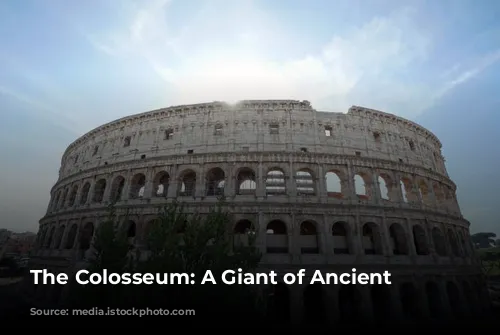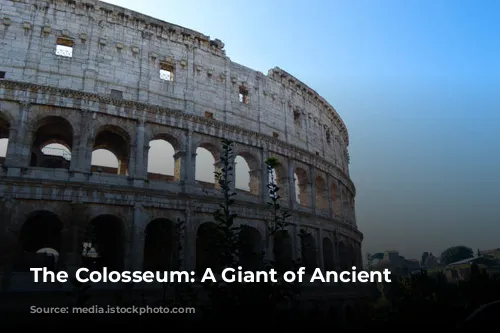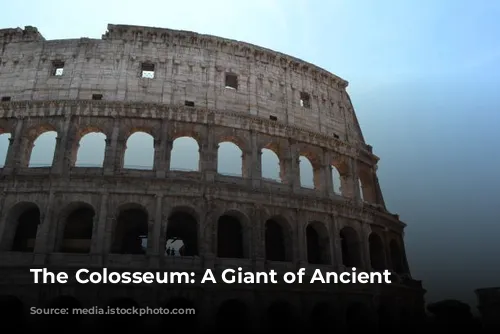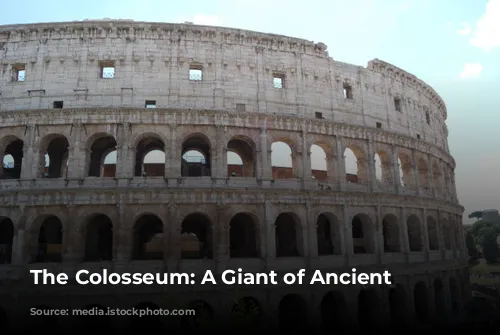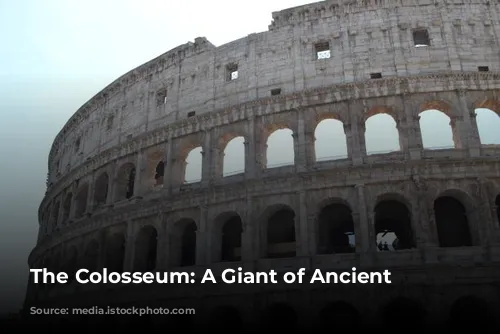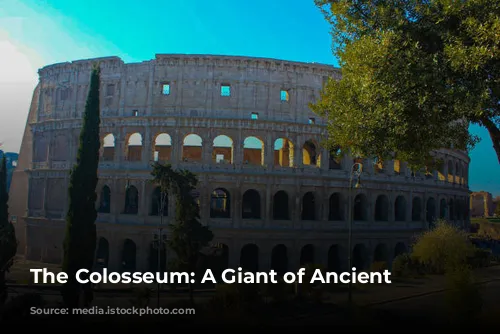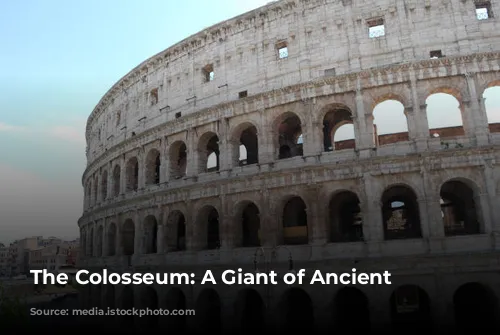Imagine a massive amphitheater, built in the heart of Rome, capable of holding up to 70,000 spectators. This is the Colosseum, a monument that still evokes awe and wonder today. It’s a testament to the Romans’ skill in engineering and architecture.
A Monument to Power and Spectacle
The Colosseum, also known as the Flavian Amphitheater, stands as a symbol of the Roman Empire’s might and grandeur. Construction began under Emperor Vespasian of the Flavian dynasty, and the arena was inaugurated by his son, Titus, in 80 AD. The inauguration was a spectacle that lasted for 100 days, featuring gladiatorial contests, wild animal hunts, and even mock naval battles.
The name “Colosseum” likely comes from the colossal statue of Emperor Nero, which stood nearby. This statue was so massive that it earned the name “Colossus,” and the amphitheater, towering over it, was later associated with the term.
Engineering Marvels
The Colosseum was an architectural masterpiece. It was built using the Roman arch, a structural element they mastered, and its elliptical shape allowed for maximum seating capacity. The Romans’ skill in engineering is evident in the fact that this massive structure was built in less than ten years.
The Colosseum is a reminder of the Romans’ ability to build structures that could withstand the test of time. While today we see only its skeleton, the massive brick walls and its four tiers of seating stand as a tribute to their engineering prowess.
A Peek Into Roman Life
The Colosseum wasn’t just a place for entertainment; it was a reflection of Roman society. The seating arrangement was designed to reflect social hierarchy, with senators and other high-ranking officials sitting closest to the arena, while commoners occupied the upper tiers.
The Colosseum was also equipped with a sophisticated retractable awning, the Velarium, which provided shade for spectators. It took 100 sailors from the Roman navy to operate the Velarium, a testament to the scale and complexity of the structure.
Gladiators, Beasts, and Spectacle
The Colosseum’s most famous events were the gladiatorial contests. These fights involved highly trained warriors battling each other, often to the death. The gladiators were a diverse group, including former prisoners of war, slaves, and even free men seeking fame and fortune.
The Colosseum also hosted animal hunts, where exotic beasts were pitted against each other or against human opponents. The hunts were often spectacular and involved elaborate sets and special effects.
The Legacy of the Colosseum
The Colosseum fell into disrepair after the decline of the Roman Empire, but its legacy continues to inspire and amaze. Today, it stands as a reminder of the power and grandeur of ancient Rome. Its walls, once a stage for bloody spectacles, now resonate with the echoes of history, drawing millions of visitors from around the world.
The Colosseum is more than just a building; it’s a testament to human ingenuity and creativity, a symbol of the Roman Empire’s power, and a window into the past that continues to captivate us today.
